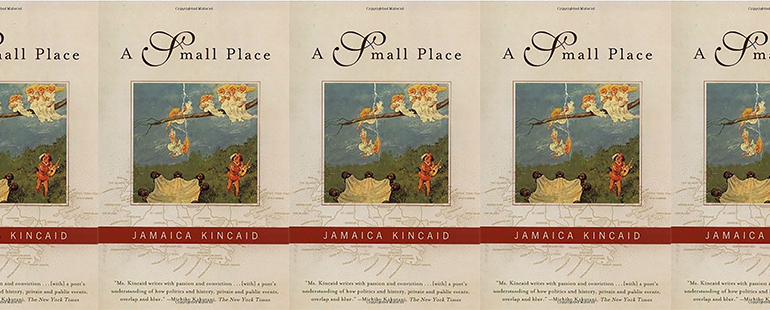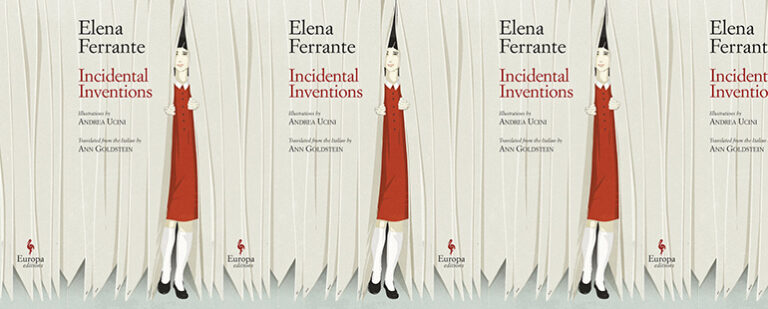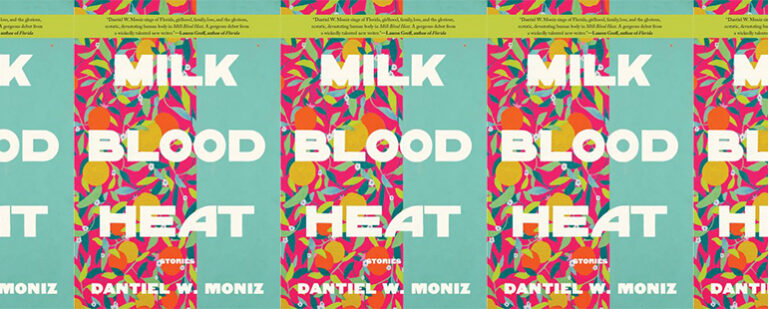A Small Place and the Attempts to Ban Critical Race Theory

Jamaica Kincaid’s 1988 book, A Small Place, opens with the phrase, “If you go to Antigua as a tourist, this is what you will see.” What follows is a list of surface-level images of Antigua— Kincaid’s home, where she was raised, and where she no longer lives—the kind of thing you’d see on a postcard or a thirty-second ad for a cruise. This building up of tourists, and this exploration of Antigua not being properly seen, carries throughout the book, as Kincaid rips through the colonists and imperialists who hurt the island, along with the dictators and other bad men who continue to wrong Antigua in so many familiar ways. The importance of A Small Place cannot be understated: it shows Antigua in a way rarely seen in English, in America, and it also shows the radical power of honesty, of rage.
Kincaid doesn’t write to support everything Antiguan, or everything colonial; she doesn’t write to support a particular political movement, to create propaganda. She writes for no one but herself and her peoples. She doesn’t write knowing what will come next, but instead asks the questions that the past has left us with. She redirects the conversation to what the next path should look like, for her and for us. It is not writing that is intended to be left or right, capitalist or communist. It is writing for a people that she loves, that she belongs to.
This kind of brutally honest work is important—maybe more so now than ever, as the United States struggles with freedom of speech, with its past. Many states are currently trying, and often succeeding, to pass laws banning the teaching of critical race theory. In most instances, these bills and laws are written in a way to allow anything that bucks the (racial) status quo to be prohibited in education—including A Small Place. Banning the teaching of critical race theory, however, is validating: what better proof do you need that we as a populace need to review how we look at history than the fact that merely mentioning a different historical lens could result in punishment? It’s important to ask, too, why the perspective offered by texts like A Small Place is so deadly for a country whose first amendment declares freedom of speech. Why must we keep a tourist’s viewpoint of outside cultures, other peoples?
There is a key part of A Small Place in which Kincaid writes about how people like her, who come from colonized homes, struggle with their past. “Do you ever try to understand why people like me cannot get over the past, cannot forgive and cannot forget?” she asks. This question is a central tenet of critical race theory, and of any history class that asks its students and professors to reexamine dominant historical narratives. Considering this question is how we bridge the gap to help disenfranchised peoples, help marginalized peoples, help our countries, help our world. Kincaid continues, for example, by talking about the history of Barclays—talking about how the Barclays family enslaved people, and how the enslavers and those they enslaved are dead now. Kincaid writes her feelings on this, saying, “It should not have been that they came to the same end, and heaven is not enough of a reward for one or hell enough of a punishment for the other.” Banning this thought is akin to banning cellphones to stop police officers from killing unarmed Black and Brown peoples.
Kincaid talks about her peoples who have been “made orphans: no motherland, no fatherland, no gods, no mounds of earth for holy ground, no excess of love which might lead to the things that an excess of love sometimes brings, and worst and most painful of all, no tongue.” Her writing speaks for herself, speaks for her peoples, speaks for the disenfranchised. If history is written by the victors, A Small Place refocuses the narrative, centering on people who have lost more than just points in a game. It is their lives, the lives of the ancestors before them, and the lives of their kin to follow that are at stake. Do we really think we can advance in a world that marginalizes so many peoples? Can we as a populace even pretend to understand these perspectives without studying and understanding a history that isn’t written by a “victor”?
In Florida, the Board of Education recently banned the teaching of critical race theory in public schools. Governor Ron DeSantis also signed into law a bill that requires members institutions of the Florida College System to conduct annual surveys to measure “the extent to which competing ideas and perspectives are presented and members of the college community, including students, faculty, and staff, feel free to express their beliefs and viewpoints on campus and in the classroom”; if an unknown level of diversity is not met, an institution’s funding may be cut. The same day, DeSantis signed into law a bill requiring public school students to learn about the perils of communism. How that act is not considered indoctrination of minors but universities teaching young adults critical race theory is hard to logically follow. But it isn’t hard to follow using the logic that the victors write the history. It isn’t hard to follow using critical race theory.
Kincaid discusses this idea, how victors define their “victory” and all of “our” history solely through their perspective. She asks: “isn’t it odd that the only language I have in which to speak of this crime is the language of the criminal who committed the crime?” How can that perspective be considered trusted, neutral? Kincaid talks about how the “criminals” of her country, of the world, continue to gaslight countries they enslaved, then impoverished. How the criminals from the country itself then use the same tactics to destroy their own home for their own “wealth.” She continues, “But nothing can erase my rage—not an apology, not a large sum of money, not the death of the criminal—for this wrong can never be made right, and only the impossible can make me still: can a way be found to make what happened not have happened.” This passage demonstrates what critical race theory tries to achieve, what so many activists working on behalf of marginalized peoples are trying to achieve, or should be trying to achieve: a language to understand our collective pasts, a language to help us prevent this from happening in the future.
Banning critical race theory is banning the attempt of understanding, is banning the language that helps the victim, is criminalizing the very act of being the victim. While Kincaid is challenging Antiguans, herself, and her peoples, the governors that are outlawing critical race theory are not preserving so much as holding America back. To love this country is to want it to work towards being its best. As a country, saying there is no racism is an erasure of the crime and exacerbates the work we as a populace need to do to keep up. Banning any other reading of American history is not loving America—it’s holding America hostage to an outdated “ideal” of itself.
The leaders of the attacks on critical race theory connect the ideology to Marxism. But their understanding of Marxism, or even how opponents of capitalism arrive at that position, is from a tourist’s perspective. Believing that Marxism is simply seated in opposition to capitalism comes from learned, not lived, experience, and represents another mistake made by the people trying to censure what is taught in schools. In A Small Place, Kincaid addresses this, saying, “Do you know why people like me are shy about being capitalists? Well, it’s because we, for as long as we have known you, were capital, like bales of cotton and sacks of sugar, and you were the commanding, cruel capitalists.”
The people campaigning against critical race theory argue that they don’t want to feel bad for what their ancestors might have done, don’t want to feel bad for having privilege. But that perspective is itself one of privilege. It comes from being a tourist of history, of the world, without any introspection undertaken to better understand history or the world, to better the future we all hope to have. It comes from someone who doesn’t want to live a life engaged. It comes from someone who can’t fathom not having history centered around themselves.
Kincaid writes: “To the people in a small place, the division of Time into the Past, the Present, and the Future does not exist. An event that occurred one hundred years ago might be as vivid to them as if it were happening at this very moment.” We as a people can’t expect ourselves to just “get over the past” without truly understanding what happened. This pain is not something learned in books; it is a lived experience. Erasing the lessons of critical race theory is equivalent to telling someone who shouts “I can’t breathe” that you think they can.
So much of critical race theory is about refocusing the story of history in order to include the perspectives of all people. As Kincaid writes in A Small Place, “once you cease to be a master, once you throw off your master’s yoke, you are no longer human rubbish, you are just a human being, and all the things that adds up to. So, too, with the slaves. Once they are no longer slaves, once they are free, they are no longer noble and exalted; they are just human beings.” Critical race theory is a means of getting us back to being human beings. For anyone against it, we have to ask: why are they so afraid of viewing the rest of us as humans?


